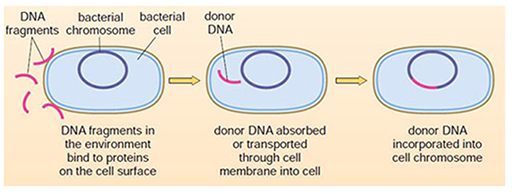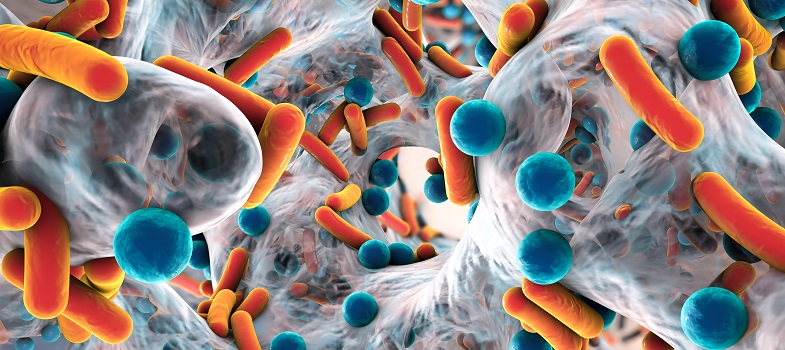3.2.3 Transformation
In contrast to conjugation, the process of transformation allows bacteria to take up DNA from their environment (for example, from a lysed bacterium) across the cell wall. This DNA can then be incorporated into the genome of the bacterium (Figure 26).

Figure 26 Schematic diagram of a bacterium taking up DNA from the environment by transformation.
Show description|Hide descriptionThis figure shows a schematic representation of the process of transformation. Bacterial cells are represented as before by a blue oval surrounded by a brown cell wall. Bacterial chromosomal DNA is represented as a purple circle. DNA fragments are represented as pink lines. In the first image DNA fragments appear stuck to the outside of the bacterial cell. There is an arrow to the next image which shows a bacterial cell containing one DNA fragment. There is an arrow from this cell to a final bacterial cell in which the pink DNA fragment is incorporated into the purple chromosomal DNA.
Transformation occurs naturally between some bacteria, such as Streptococcus pneumoniae and Haemophilus influenza. When antibiotic resistance genes in the environment are transformed into a new bacterial type, they can be incorporated into that bacterium’s genome. They are then transmitted to the next generation by binary fission, establishing a newly resistant population of bacteria. Unincorporated plasmids are also usually (but not always) passed to the next generation.




